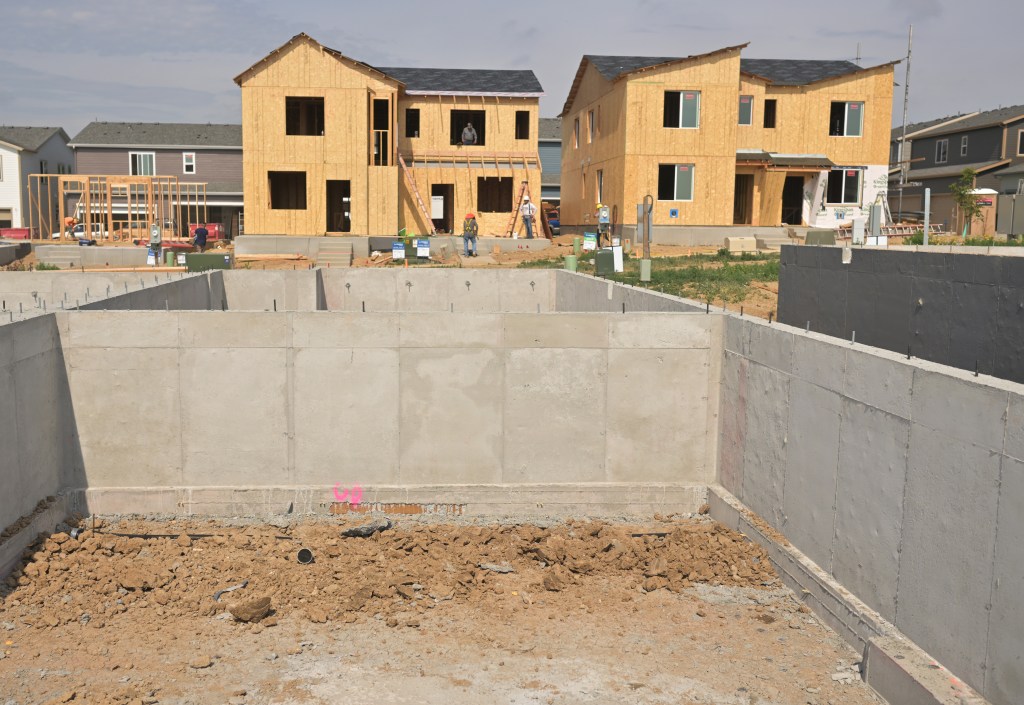AUSTIN — Even if population growth in metro Denver came to a screeching halt, the region would still need to add tens of thousands of new homes and apartments to cover a deficit built up after a decade of under construction, according to an analysis from Zillow.
The country has seen the strongest pace of new home construction since 2007, the final year of the housing boom. Even with that, Zillow estimates that the country’s housing deficit rose from 4.3 million units in 2021 to 4.5 million in 2022, the most recent year available for analysis.
“We desperately need to build more housing,” said Orphe Divounguy, a senior economist at Zillow, during an interview at the National Association of Real Estate Editors in Austin on Tuesday.
In metro Denver, there were an estimated 70,197 “missing households” in 2022, about 500 more than in the prior year.
Zillow defines missing households as those living with non-relatives and then subtracts out the number of vacant units to determine the housing deficit. Such families and individuals are key candidates to move out and create a separate household.
The count may understate the shortfall, given that it doesn’t include relatives living together, such as adult children with parents. And it isn’t enough for builders to just target the number of missing households. They also must create enough places for new people moving into the market and young adults moving out on their own.
Although Denver has a big housing shortfall to overcome, it isn’t the most severe one. Boston, Sacramento, Portland, San Diego, San Francisco, San Jose, Seattle, Minneapolis and Los Angeles have some of the worst shortages.
Denver, however, is near the bottom for the share of missing households who have enough income to comfortably afford to buy a place given where home prices are at, Zillow found.
Nationally, 15.1% of the households doubling up could afford a place of their own. But in Denver, that ratio is only 5.1%, one of the lowest shares outside of California. The Colorado legislature has tried to help families doubling out by passing a law, effective July 1, that bans residential occupancy limits or caps on how many people can live in a single home.
As much as for-sale home construction has ramped up, the gains in apartment construction have been even more robust, reaching the strongest pace seen since 1985, according to a separate study from Apartment List.
Metro Denver added 41,000 new multifamily units from 2021-23, according to Apartment List. That works out to 4.6 units per 1,000 residents, the fifth highest pace among major metros and an acceleration from the 3.4 apartments per 1,000 residents. Between 2015 to 2020, the annual average was 3.4 apartments per 1,000 residents.
The added supply has allowed Denver rents, which were rising at a 16.8% pace in 2021, to level off. Denver ranks 25th overall for rent growth among the 50 largest metros.
“Flat rent growth signals a healthy balance of new supply offsetting new demand,” said Rob Warnock, a senior research associate at Zillow.
But nothing remains static, and the apartments hitting the market now reflect plans made three or more years ago. Apartment permits are being pulled at their slowest pace since the Great Recession. reflective of how higher interest rates have made it difficult for projects to be viable financially.
“These things ebb and flow, and the forward-looking multifamily permits data show a fairly sharp pullback on the horizon in Denver,” he said. “So it’s reasonable to expect that in the next two years new supply levels will once again fall behind new apartment demand, and rents will be back on the rise.”
Despite all the new apartment supply landing in Denver and other cities, demand has proven surprisingly resilient, said Sam Tenebaum, head of Multifamily Insights and the real estate firm Cushman and Wakefield.
Tenebaum, speaking at NAREE, said the apartment market, rather than facing a bust of oversupply and falling rents might return to undersupply.
Construction starts on new apartments, which had been matching demand, could drop by half in 2025 and 2026 compared to peak levels seen last year, Tenenbaum said, adding that vacancy rates in most markets have peaked or could peak shortly.
“We have strong demand, and we will have supply dropping off,” he said of the next two years.
Get more real estate and business news by signing up for our weekly newsletter, On the Block.
